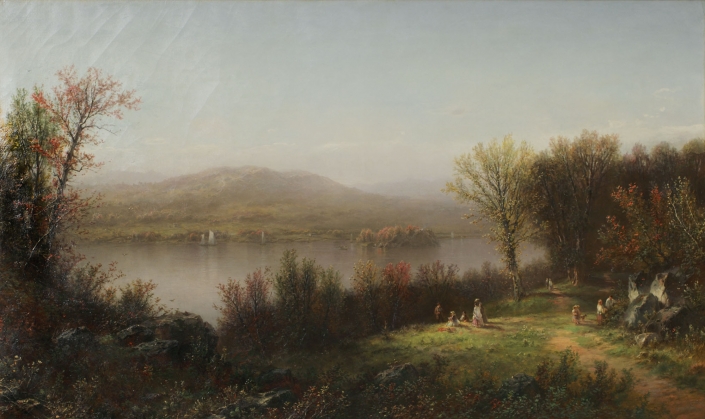
Located at the Albany Institute of History and Artis a landscape painting titled Pollepel’s Island (View of the Hudson near Newburgh) by artist George Henry Boughton, 1858. This painting is an oil on canvas. The artist used loose brush strokes and an impasto style. The brush strokes and the texture of the paint is visible to the eye. This is a large painting with small intricate details. There are many colors used that blend together. There is a contrast from the foregrounded woodlands and the river and sky. Key lights highlight the area where you can see what appears to be a family enjoying the outdoors and the scenic river view. This painting gives a relaxed and calm feel. The colors are bright and soft. The horizon has a soft texture and the river is calm and relaxing. It feels like a happy peaceful day. The perspective is atmospheric and linear.
The visible, thick and loose brush strokes and detail remind me of the Rococo period. While the landscape techniques remind me of landscape paintings in the Northern Baroque period. This piece has inspirations from both periods. I relate this piece to Claude Lorrain’s Landscape with Cattle and Peasants, 1629. Both pieces have a well-defined and detailed foreground. Both have a strong contrast from the sky to the ground. Key lights focus the viewers eye on the subjects of the portrait. Both settings feature the same lighting, background, colors and a body of water. Although highly similar, there are differences in these pieces. In Boughton’s piece the sky takes up the top quarter or the landscape, while in Lorrain’s the greenery reaches the top edge. Boughton’s work has much more color. When comparing these two pieces, you can see how Boughton was inspired from works from the Northern Baroque period.
